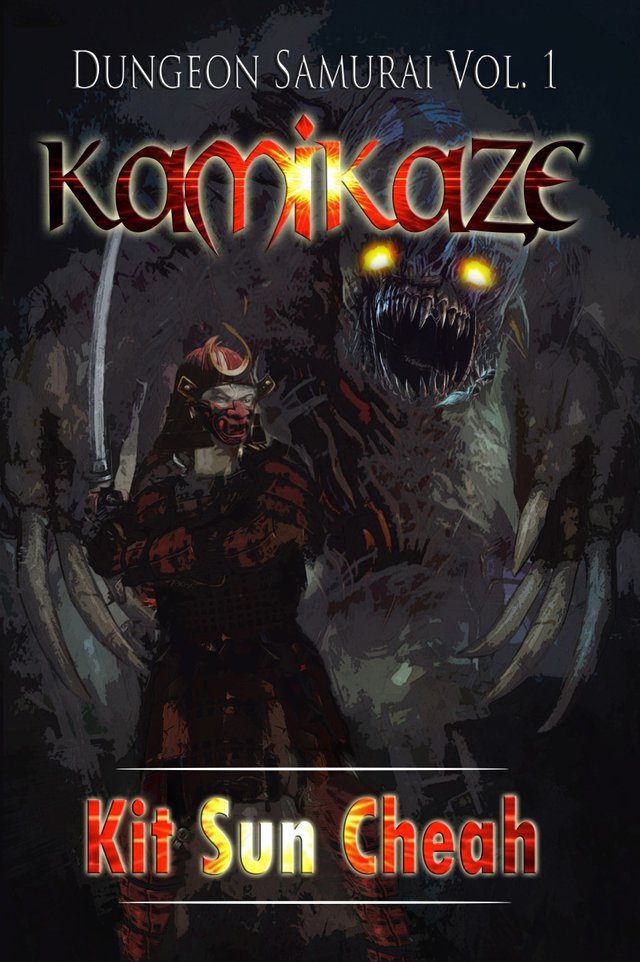The Logistics of Dungeon Warfare

Amateurs talk tactics. Professionals study logistics.
Fantasy authors ignore both.
While (probably) an exaggeration, rarely will you find fantasy stories that pay attention to the logistics of supporting a military. Even in allegedly military fantasy tales, you'll find stupendously huge armies that require neither salaries nor supplies, ridiculous tactics that work because the plot demands it, absurdly fast (or slow) travel times, and other such tropes. It's bad enough that Alexandru Constantin dedicated a whole blog post to this.
Most fantasy authors aren't formally-trained military personnel, or even enthusiasts. They just write what entertains them and the audience. This may be enough to satisfy their audience. But not me.
When writing DUNGEON SAMURAI, I set out to incorporate logistics and strategy as an integral part of the story. With professional soldiers running the campaign, failure to do this would fatally break immersion. At the same time, DUNGEON SAMURAI was conceived as a fast-paced action series, and very few readers enjoy reading ORBATs, logistics arrangements, strategy meetings and other such necessities of war. I didn't want to bog down the story, and the reader, in minutiae.
To reconcile these requirements, I aimed to incorporate logistics and tactics as an integral part of the story.
The War of Attrition
The key to a dungeon crawl is attrition.
Any dungeon crawl game, be it a tabletop board game or a action-packed JRPG, is centered on resource management. The game forces the player to overcome a nigh-endless horde of monsters with finite resources, be it health, MP, healing items, ammunition, manpower, and so on. The player must accomplish the objective before he runs out of resources (and health). This balancing act requires the player to calculate risks and rewards before acting -- more so if the game is designed for high-risk gameplay where every mistake exacts a toll, such as Darkest Dungeon.
I wanted to capture the essence of attrition in DUNGEON SAMURAI. The monsters are deadly, overwhelming, and endless. The samurai must manage water, weapons, oil, armor, prayers and ammunition. The deeper they delve into the dungeon, the more resources they must expend, and the further they get from their base of operations, increasing the risks they take. At critical moments, characters must decide whether to continue the mission, to fall back, or to order a resupply run. And every decision carries costs and consequences.
To keep the warriors supplied and to keep the campaign running, the human military establishes forward operating bases throughout the dungeon. These bases hold critical supplies, first aid posts, and maps. Well-guarded supply routes connect the FOBs to each other and back to the surface. But the deeper the humans go, the more their soldiers are stretched out, and the longer the distance the troops have to march to their kick-off point and back up to the relative safety of the surface, further complicating logistics.
Logistics and supply management alone aren't enough to win a war. Training, too, is paramount. Combat in the dungeon is quite unlike any other environment in the world, and those who would fight in the darkness must be prepared for it. Most fantasy stories simply have the heroes march into the jaws of death without any preparation, trusting to the almighty author to keep them alive and whole until the plot demands their doom. In DUNGEON SAMURAI, the military established a training regimen and structures to prepare warriors for combat in the deep. In fact, a goodly portion of Volume 1 is dedicated to training, just so the hero won't die in the dark. (But don't worry -- future volumes will focus on combat.)
These elements, and more, are seen through the eyes of Yamada Yuuki. Instead of bogging down the reader, I sought to have Yamada experience these elements for himself, study from the veterans, and eventually make decisions of his own. He participates in resupply operations and guards supply routes; he protects civilian workers who support military operations; when he plunges into the dark, he must keep track of supplies and decide when to press on and when to retreat. By making attrition, logistics and tactics integral to the plot, these elements become invisible to the reader who doesn't care for them, yet reveal themselves to the reader who does, satisfying the needs of both.
Incorporating logistics and strategy is critical for military stories that encompass sweeping campaigns and large armies -- but there are many readers who just want an awesome story, not a military treatise. By integrating these elements into the plot, an author will create an immersive experience that entertains readers, whether they enjoy military strategy or not.

To see how I did it, you can preorder DUNGEON SAMURAI VOL. 1: KAMIKAZE here.
To stay updated on writing news and promotions, sign up for my mailing list here.
You are so great in what you do. I enjoy every word, well done.